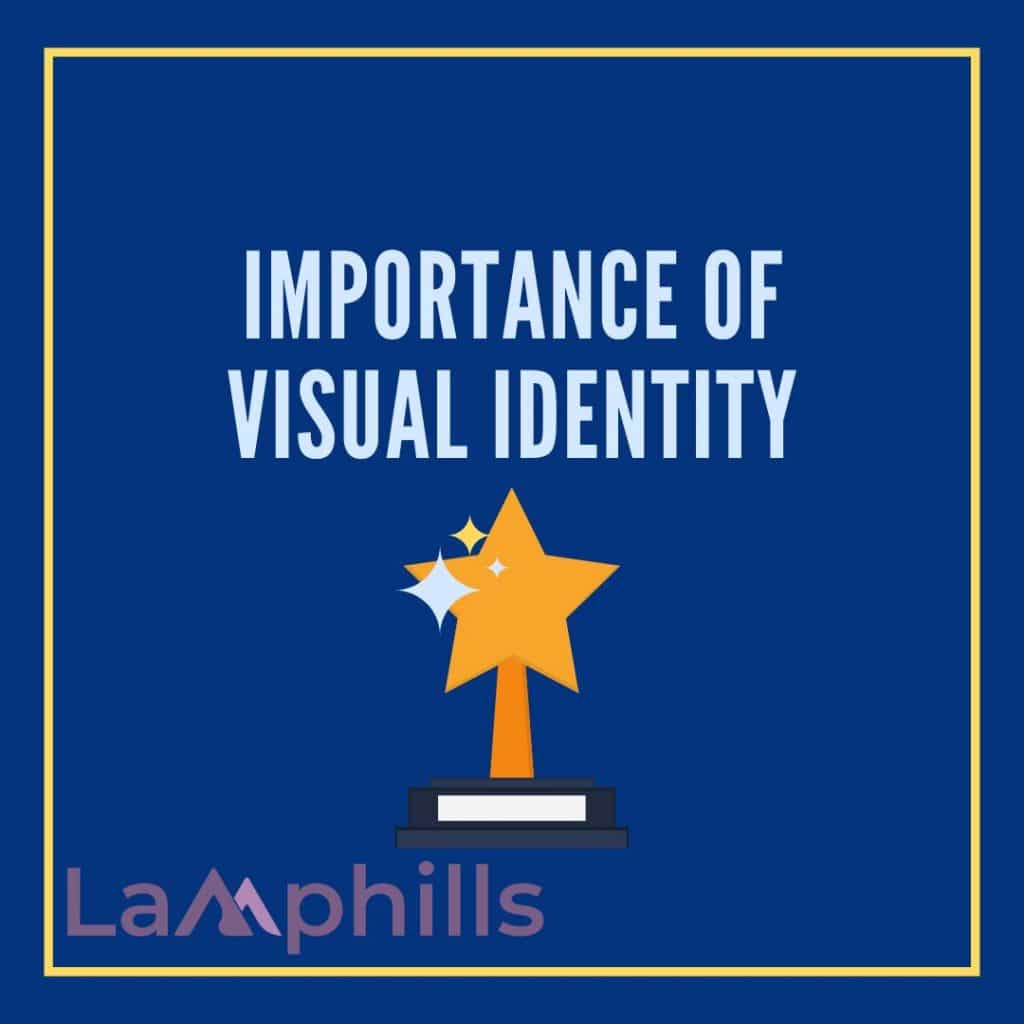So, you know how you can instantly recognize certain brands just by seeing their logo or hearing their jingle? That’s not by accident; it’s the magic of branding and visual identity at work. Think of branding as the personality of a business and visual identity as the face it shows to the world. Whether you’re running a small hustle or a big company, getting these two things right can make a huge difference. In this article, we’ll break down what branding and visual identity are all about, why they matter, and how you can use them to make your business stand out in a crowded market.
Key Points
- Branding is the process of creating a strong, positive perception of a company through elements like logos, designs, and consistent messaging.
- Visual identity consists of the visual elements, such as logos and colors, that represent and differentiate a brand.
- A strong visual identity helps a brand stand out in the market, fostering recognition and emotional connection with customers.
- Effective branding and visual identity work together to create a cohesive, memorable experience that builds customer loyalty and trust.
What Is Branding?
Branding is the process of creating a strong, positive perception of a company and its products or services in the customer’s mind by combining such elements as a logo, design, mission statement, and a consistent theme throughout all marketing communications. Branding defines and expresses a company’s unique identity, encompassing its mission, values, and a unique narrative. At its core, branding consists of a company’s name and logo, visual identity design, mission, values, and tone of voice. Your brand is also determined by the quality and uniqueness of your products, the customer service experience you provide, and even your pricing strategy.
Branding creates an identity of the product or service in the purchaser’s mind to acquire an edge over the competitors and capture maximum market share. Effective branding is about consistently delivering on promises and creating an enduring image in the minds of consumers. Branding increases the recognizability of products and services amongst your consumers, giving you that competitive edge within the market. It helps to define how customers recognize your brand, typically comprising of a name, tagline, logo or symbol, design, and brand voice, and also refers to the underlying values of the business and the overall experience a customer undergoes when interacting with a business.
What is Visual Identity?
Visual identity is a collection of visual elements that serve to represent and differentiate a brand. It refers to any visible components, such as a logo or brand colors, that help customers identify a brand. A brand’s visual identity is a combination of graphic elements that represent and identify it, including its logo, color palette, typography, imagery, and other design elements. Visual identity is all of the imagery and graphical information that expresses who a brand is and differentiates it from all the others.
Visual identity reinforces your core values and brand promise through visible mediums. Using consistent and strategic visuals to help communicate, a strong visual identity also helps tell your brand story. Over time, customers’ continued exposure to your brand will foster associations and create emotional responses, oftentimes triggered by visual cues. Developing a visual identity is just one part of the brand-building process, but it can be one of the most exciting and enjoyable. It’s what makes a company or brand recognizable.
Elements of Visual Identity for Your Branding
Elements of visual identity are simply what makes up the visual identity of your brand, i.e., what is used for the development of the visual identity, and they include:
#1. Logo
A logo is a symbol that instantly identifies a brand, using colors, shapes, typography, and sometimes a tagline. It’s a distinctive mark or symbol that represents the business, and a well-designed logo is memorable and reflects the brand’s ethos. A logo can be a wordmark, lettermark, or monogram, depending on the brand name and desired emphasis. A logo lockup that includes all logo elements in a finalized position should be adaptable for various contexts.
Below is a FREE comprehensive checklist that will guide you through the logo design process, ensuring you cover all the key elements needed to create a memorable and impactful logo.
Logo Design Checklist.PDF
#2. Brand Colors
Brand colors shape a brand’s visual identity at every touch point, influencing perception and emotions. Colors evoke emotions and have psychological effects, and brands choose colors that reflect their identity and influence how their brand is perceived. Understanding color psychology informs the color palette selection, ensuring functionality and versatility across diverse contexts. A color palette consists of dominant, secondary, and neutral colors, selected based on color theory and psychological principles.
#3. Typography
Typography significantly impacts the message being delivered, evoking mood, setting tone, and cultivating brand recognition. Good brand typography should be readable, enduring, versatile, functional, and communicative. Selecting typography involves considering typeface, kerning, and style to convey the brand’s personality. Typefaces and fonts express a brand’s personality and increase visual coherence, with consistent selection across all communication channels.
#4. Photography
Photography communicates a brand’s story through images and videos, strengthening its visual identity. Consistent style, composition, and subject matter ensure a branded and cohesive look. Photography can express a brand’s personality and create an emotional connection with customers. Imagery and photography style convey a brand’s personality, transmitting feelings and emotions to customers and building loyalty and trust.
#5. Graphics, Illustrations, and Icons
Graphics, illustrations, and icons serve as stylistic extensions of a brand, influencing user experience and interaction. They can be simple or complex, from lines and shapes to icons and buttons, and contribute to a brand’s overall visual identity. Graphics, in the context of visual identity, are picture assets that are drawn or designed and can be used to create logos, icons, or illustrations.
#6. Layout and Composition
Graphic design layout refers to the placement of graphic elements within a specific communication material. How visual elements are arranged can greatly affect the perception of the brand, and good composition guides the viewer’s eye and can convey the brand’s message more effectively. The arrangement of elements should be different on a website, social media posts, brochures, product and packaging design, or videos.
#7. Packaging
Product and packaging design reflects a brand’s strategy and identity, with consideration for materials, functionality, aesthetics, and regulatory information. Packaging design is a key part of visual identity for product-based businesses, and it’s an opportunity to make a tangible connection with customers. The design must be functional and carry the brand’s visual identity to make the product stand out on the shelf.
#8. Web Design and Digital Presence
A brand’s online presence must be consistent with its overall visual identity, including the design of the website, social media profiles, and digital advertisements. Web design and digital presence are crucial elements of a brand’s visual identity, as they provide an opportunity to engage with customers and communicate the brand’s message.
#9. Brand Style Guide
A brand style guide is a document that outlines the rules for the visual representation of the brand, creating consistency across all uses, whether in-house or by external partners. It provides detailed instructions on how to use all the visual identity elements, ensuring that the brand’s visual language is cohesive and effective.
How to Create a Good Visual Identity
If you are looking to create a visual identity for your brand, this section simplifies the steps for achieving a successful visual identity for your brand. They include:
#1. Understand Your Brand’s Purpose and Personality
To create a strong visual identity, you need to understand how your brand should influence your visuals. This means carefully thinking about and planning your brand purpose, personality, voice, tone, and messaging to ensure your visuals hit all the right notes. Your brand’s purpose is the foundation of your visual identity, and it must reflect what your brand does, who it is, what it cares about, and how you want to communicate this to your audience.
#2. Define Your Visual Fundamentals and Principles
Although creating a visual identity is primarily a creative and artistic pursuit, there’s still some science to it. You have to adhere to certain fundamental principles if you want to design beautiful visuals that appeal to viewers. The fundamentals of design that you need to consider include repetition used to create unity and evoke a sense of rhythm; contrast, for creating emphasis and highlighting the difference between various elements; hierarchy, used to call attention to the importance of different elements and make viewers look at one over another; balance, using tension, for grouping weighted elements on a page symmetrically or asymmetrically.
#3. Develop Your Visual Elements and Identity
Define your color palette, which should embody your company, your brand’s overall personality, and the message you want to send to your target audience. Learn more about the psychology of color and how it can impact your brand’s visual identity. Create a distinctive logo that reflects your brand, which can be a symbol, icon, or even your brand name in a stylized format. Choose your fonts, which should align with the aesthetic and tone of your brand, and select textures, shapes, and elements that paint a specific picture in the minds of your audience.
#4. Document and Standardize Your Visual Identity
Document your brand’s visual identity and ensure consistency across all channels and materials. Develop a set of guidelines, also called a brand style guide, to preserve your image and ensure that everything you create aligns with your brand identity. This will give your company a more unified, reliable, and professional appearance. Consistency is what can create or break a brand identity, so make use of the design options you have chosen for your brand in all areas of your business.
#5. Analyze and Refine Your Visual Identity
Make a final analysis to ensure your brand identity is distinguished, attractive, scalable, cohesive, and easy to apply. Monitor your brand’s performance and track your results to implement changes as needed. Use Google Analytics, surveys, comments, social media discussions, and more to track your brand and get an idea of what people think and talk about you. This will give you the opportunity to implement changes to correct an error or to improve your identity.
Importance of Branding vs Virtual Identity to Your Brand
Branding vs visual identity is one of the two most important things to do for your brand, as they have various importance to the successful development of your brand. Their importance includes:
Importance of Visual Identity

A strong visual brand identity is crucial for any business, as it influences perception and leaves a lasting impression on customers. A well-defined visual identity can benefit businesses in numerous ways, including differentiation, relatability, and consistency, ultimately leading to brand loyalty and recognition. By creating a unique and recognizable visual identity, businesses can set themselves apart in a crowded marketplace, making it easier for customers to relate to and remember the brand.
A professional and polished visual identity can also elevate a business’s reputation, giving the impression of a well-established business and fostering trust and credibility with customers. Furthermore, a strong visual identity can evoke emotions and feelings in customers, forging an emotional bond that leads to brand loyalty and advocacy, while also communicating the business’s values and mission at a glance.
In addition, a distinct visual identity can help businesses stand out in crowded marketplaces, support marketing efforts, and associate new products or services with the established brand. It can also instill a sense of pride and belonging in employees, embody the purpose and direction of the business, and influence the perceived value of products or services.
To create an effective visual identity, businesses should ensure that their graphic components are suitable for their target audience and convey the desired feeling while also making sure the visual identity stands out, is recognizable and memorable, and can be easily replicated across all platforms. A simple, timeless, and functional visual identity will support the business’s growth and evolution while also facilitating entry into new markets as the business expands globally.
Importance of Branding
Branding helps create a unique identity for your business, setting it apart from competitors. This includes your logo, color palette, typography, and tone of voice. A well-defined brand identity makes your business more recognizable and memorable.
A strong brand builds trust with your target audience by consistently delivering on its promises. This trust leads to credibility, making your business a preferred choice over competitors. Branding also helps establish your business as an authority in its industry. Branding creates an emotional connection with your target audience by resonance with their values, needs, and desires. This connection fosters loyalty, making customers more likely to advocate for your business and return for repeat purchases.
A well-established brand increases the value of your business, making it more attractive to investors, partners, and customers. A strong brand can also command a premium price for its products or services. Branding ensures consistency across all touchpoints, from your website to social media and advertising. This consistency builds recognition, making your business more familiar and accessible to your target audience.
What Are Visual Identity Guidelines?
Simply put, company guidelines are a list of features and attributes that, together, constitute a brand’s visual identity. Guideline documents cover everything from logo usage, fonts, color palettes, typography, and tone of voice, as well as a brand’s mission statement, positioning, identity, and values.
What Is the Difference Between Key Visual and Visual Identity?
A key visual is defined as the brand’s guiding graphic motif, which plays a central role in its visual identification. It is a meticulously designed element that is intended to be not only easily recognizable by the audience but also consistent with the values and character of the brand.
What Is the Importance of a Branding Statement?
It will help with networking, gaining trust within your industry, and standing out from others in your field. Having a personal brand statement makes it easy for anyone—employees, customers, clients, or contacts—to identify if they want to work with you or listen to what you have to say.
Conclusion
In a country as vibrant and diverse as Nigeria, where consumers are spoiled for choice, strong branding vs visual identity is your key to thriving. Think of branding as the soul of your business and visual identity as its face—both are necessary to connect with your audience on a deeper level.
By understanding and investing in these elements, you’re not just building a business; you’re creating an experience that resonates, lingers, and turns customers into loyal advocates. So, whether you’re a startup or an established brand, remember: in the crowded marketplace of today, it’s not just about what you sell, but how your brand tells its story.
Related Articles
- Branding vs Trademark: What Every Business Owner Needs to Know
- Branding vs. Advertising: Understanding the Difference
- Branding vs. Brand Identity: Understanding the Key Differences to Build a Strong Brand
- Branding vs. Marketing: Examples and Differences






